Few people would consider Agia Roumeli as a location to spend a couple of quiet days relaxing.
Between May and October, from around 3pm to 5.30pm, hundreds of walkers spill out of the Samaria Gorge to soothe their aching muscles in the Libyan Sea, and quench thirsts in the many waiting restaurants and cafes.
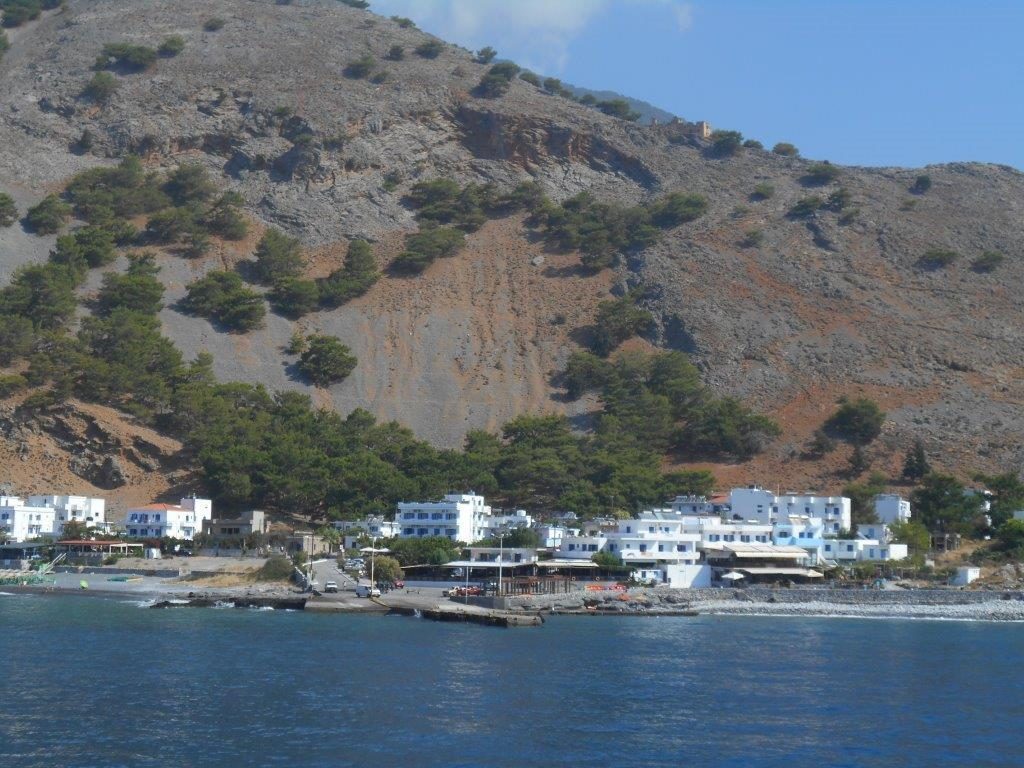
But after the ferries depart late afternoon, the ‘Daskalogiannis’ east to Loutro and Sfakia, and the ‘Samaria’ west to Sougia and Paleochora, Agia Roumeli is practically empty, and similarly in the morning, calm and tranquil as the village slowly comes to life, and preparations begin for the daily invasion.
But there’s a lot to see and do in Agia Roumeli, despite what you might think. Archeological excavations indicate there’s been a settlement here – Tarra – since the Minoan period, around 3000 BC. So for over 5000 years, successive eras – Mycenaean, Dorian, the Hellenistic and Roman periods, Byzantine, Venetian and Ottoman/Turkish – have all left traces of their history in Agia Roumelli.
Probably its zenith came around 300 BC when Tarra joined with the nearby cities of Lissos, Syia (Sougia), Elyros, Pikilassos and Yrtakina (all worth visiting) to form the Confederation of Oreioi, and Tarra was an important port and safe harbour on the trade routes between Rome, Egypt and Constantinople.
Accommodation is plentiful (except in August, when it’s far too hot anyway), and none better than the Calypso Hotel and Restaurant, just a stone’s throw from the skala/pier, run for many years by Andreas Stavroudakis and his family. Andreas’ knowledge of the area is second to none, he speaks several languages fluently, has kayaks for rent, and can take you to nearby beaches in his power-boat.
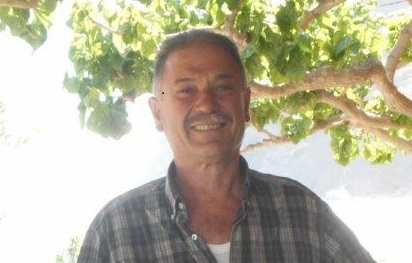
There’s no road access to Agia Roumeli, so unless you descend Samaria Gorge or walk there by the E4 trail, you’ll need to take the Anendyk ferry from Paleochora via Sougia, which runs daily in summer, a pleasant ‘cruise’ of 1.5 hours along the spectacular south coast.
Here’s my list of ten things to see:
1 The Church of Our Lady (Panagia) just a few minutes’ walk away, Byzantine, and built on the site of a former 1st century AD temple to Apollo, with mosaics outside and (although usually locked) inside the building.
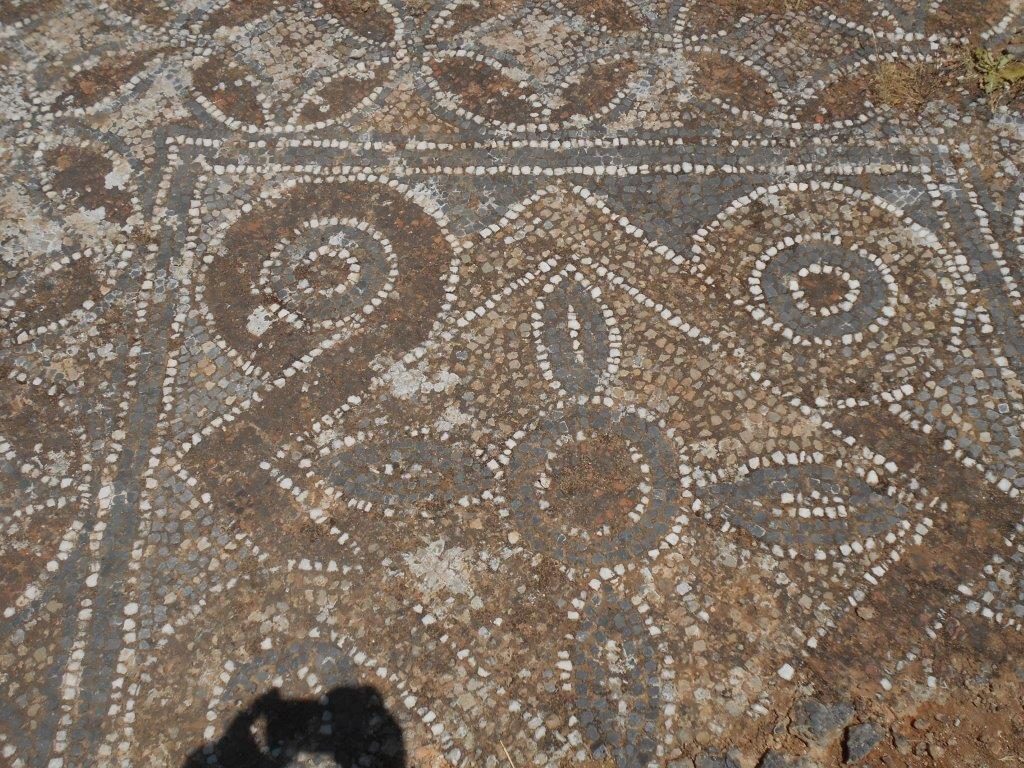
2 The Turkish Fort or Koules, reached by a steep (200m) climb on a path beginning near the church. One of many such towers, built to control/suppress Cretan rebels and revolutionaries, it’s still in reasonable condition, and worth the effort for the panoramic views.
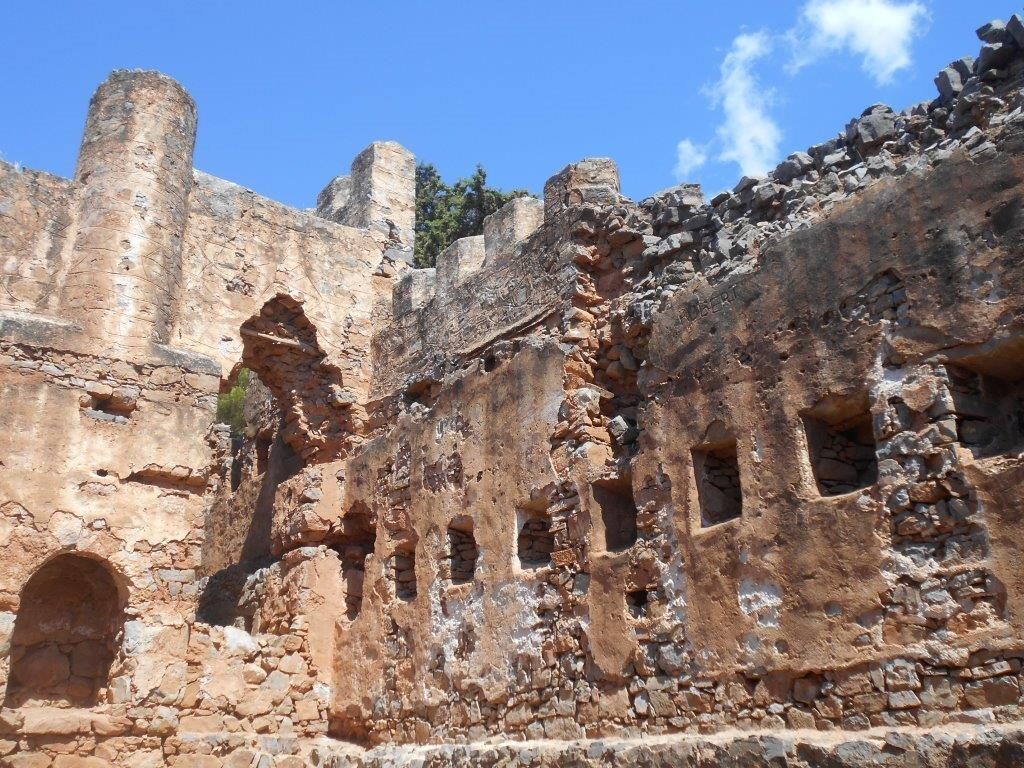
Even higher on the ridge, another hour/350m away, is Kouledaki (small tower), which has eye contact with the two forts across the valley at Agelokambos, accessed (with difficulty) from the Eligias Gorge.
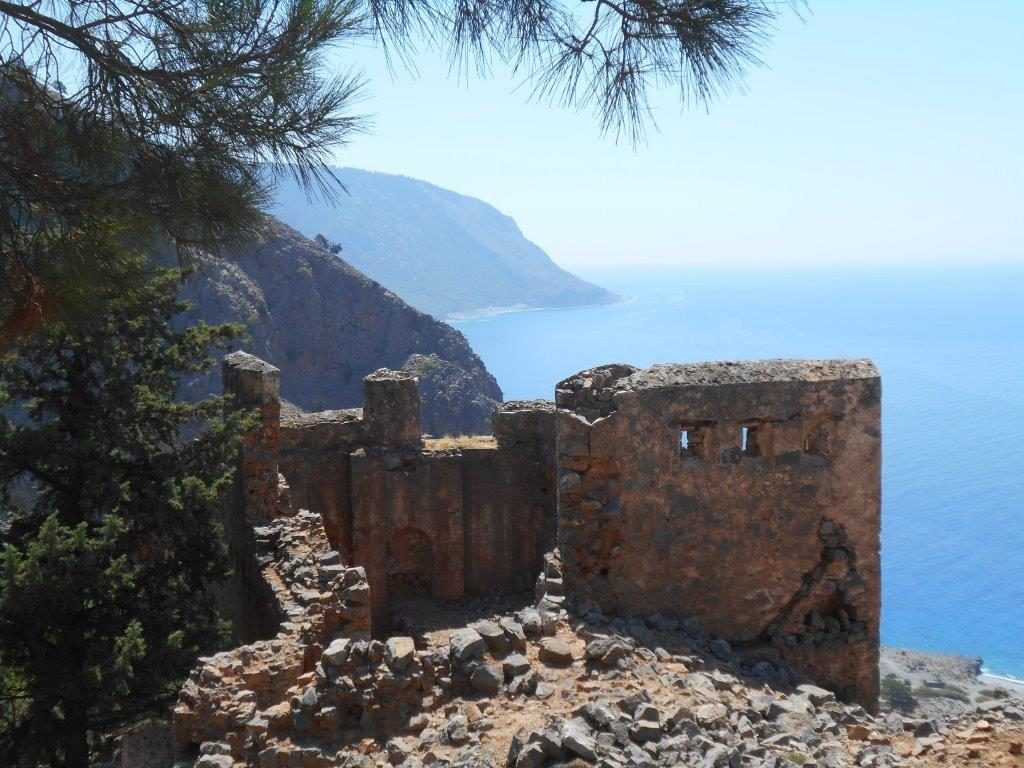
A good path descends on the north side, and nearing the valley, meets the sign-posted trail to …….
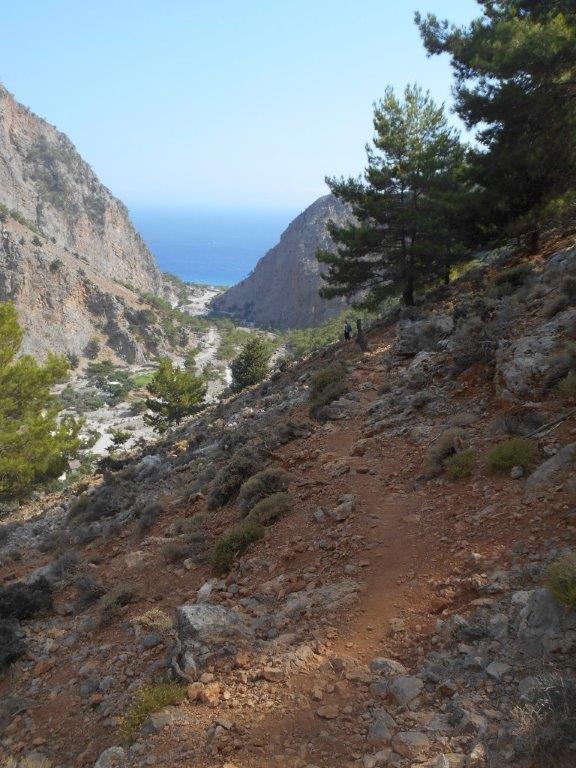
3 Agia Paraskevi church, which makes a pleasant evening or early morning stroll through pine trees. At 215m, it’s situated directly above…
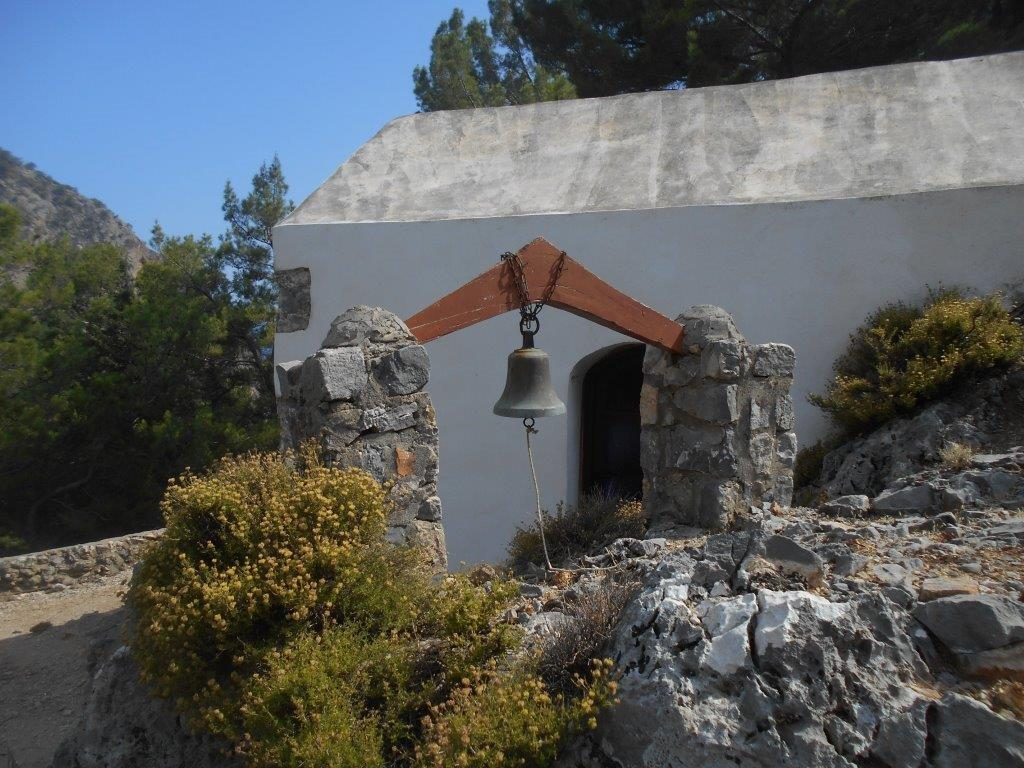
…and gives good views down to ….
4 Old Agia Roumeli, once a thriving community, but practically deserted now ; the village was largely abandoned after severe flooding in 1954, and with the opening of the Samaria Gorge in 1962, villagers moved down to the coast to establish and develop the ‘resort’ there. Now the main inhabitants are sheep and goats.
To the south of the village are the churches of ….
5 The Holy Trinity and Agios Antoniou – the former with a cemetery, and usually locked because of its proximity to the ‘highway’, and the latter a small chapel set into a cave high on the hillside. Its ‘Saint’s Day’ is January 17th, when Agia Roumeli is usually deserted. Nothing remains of the mainly Dorian city of Tarra, sited east of the river under the huge cliffs. Glassware, jewellery, coins and earthenware unearthed here are now in the Archeological Museum in Chania.
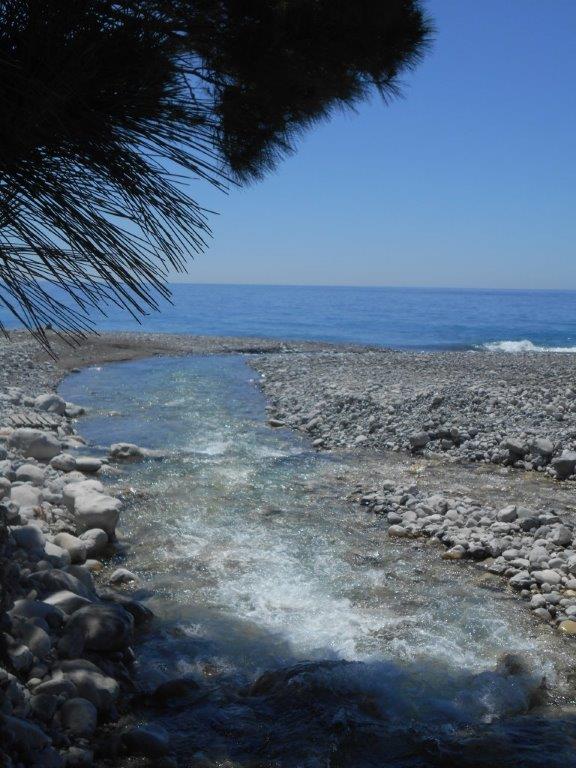
Nearing the village, left of the trail, is …
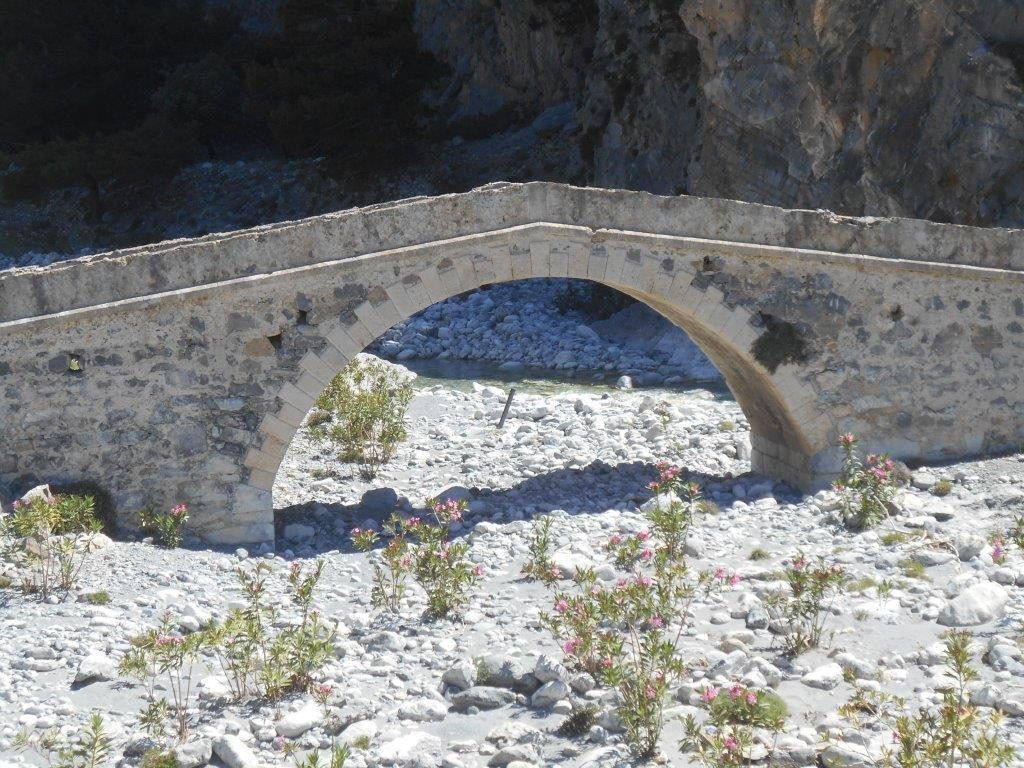
6 The Venetian Bridge – a single arch over the river, usually dry by early summer ; further down where the river/bed meets the sea, is shade under pine trees far from the mid-afternoon madding crowds.
7 The Samaria Gorge (lower part) only becomes busy towards midday, so make an early start and walk up through Old Agia Roumeli to the Wardens Post and (5 euro) ticket office. From here it’s around 2km, half an hour or so, to the Sideroportes, or Iron Gates, where the gorge narrows to just 3.5m below cliffs rising to 600m, dramatic scenery, and the location for a million photos. Return the same way, and if you wish, join the limping, weary and wounded on a short mini-bus ride to the beach.
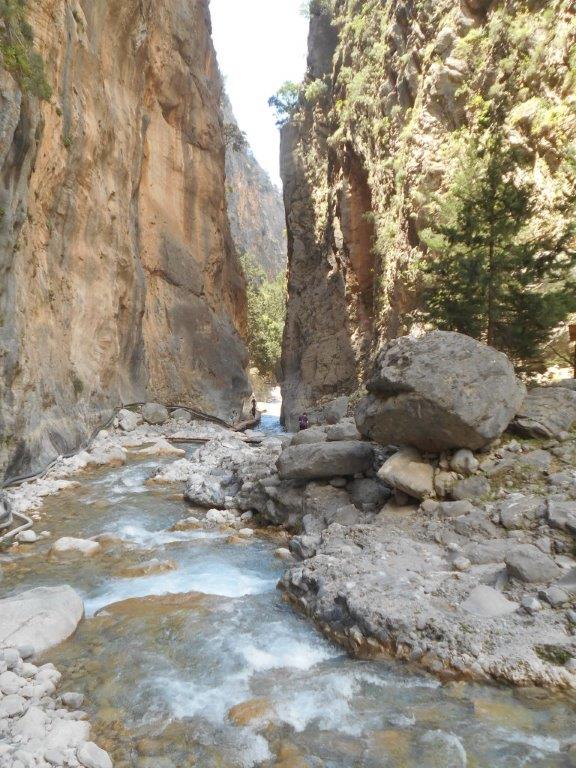
8 Domata beach lies 5km west of Agia Roumeli beyond equally attractive Fournoti, Kalogeros and other smaller strands. Hire kayaks from Andreas, or arrange for him to take you (and return) by boat. Walking back from Domata by the E4 path will take around 4 hours, the trail climbing to over 500m, well waymarked but over difficult terrain and with a very steep descent.
9 Eligas Gorge, east of and parallel to Samaria, is one of the lesser known and certainly least visited gorges in South Crete. To look into it, even if no more, follow the E4 trail (towards Loutro) for 3km to Skonyari beach, and an obvious sand/scree fan running down from the gorge exit. Find the way into the gorge, and walk as far as you wish ( carrying a water supply, there are no springs here.) The full descent of Eligas Gorge is a serious expedition (which I’ve done only once, in a long day from Katsiveli to the Potamos valley, then down Eligas – requiring ropes – in around 10 hours.)
A further half hour along the coast path is …
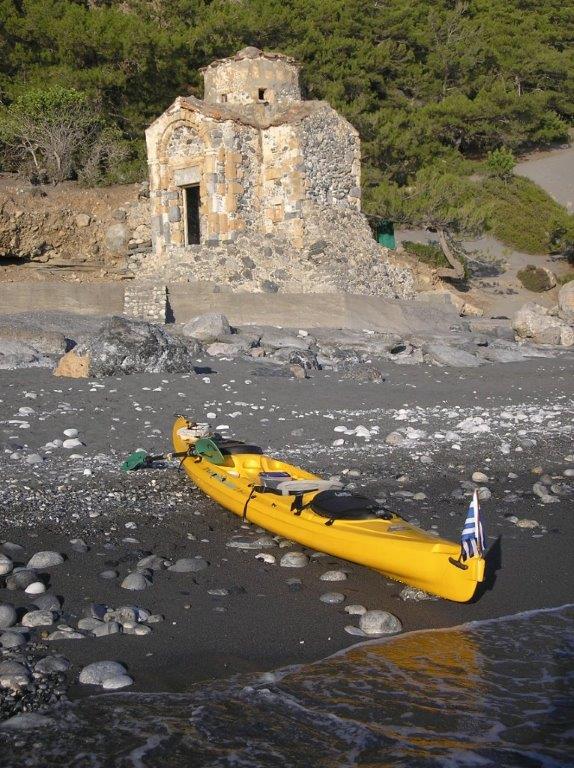
10 Agios Pavlos, a picturesque Byzantine church, built in the 10th C with frescoes from the 13th C, marking the place where St. Paul reputedly landed during a stormy voyage from Turkey to Rome in AD 59. Sadly, a nearby taverna rather spoils the once remote atmosphere.
If you’ve combined a visit to Agios Pavlos with a walk into the Eligas Gorge, it’s quite understandable if you’ve agreed with Andreas to take you back to Agia Roumeli in time for a shower, dinner, then relax and and listen to “ water lapping with low sounds by the shore” as night falls ….



Recent Comments